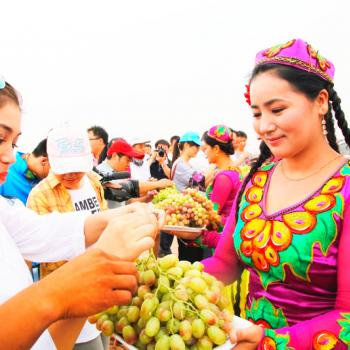Historic Centre of Macao
© Ko Hon Chiu Vincent
Macao, a lucrative port of strategic importance in the development of international trade, was under Portuguese administration from the mid-16th century until 1999, when it came under Chinese sovereignty. With its historic street, residential, religious and public Portuguese and Chinese buildings, the historic centre of Macao provides a unique testimony to the meeting of aesthetic, cultural, architectural and technological influences from East and West. The site also contains a fortress and a lighthouse, the oldest in China.
The development of the water ways of the Silk Roads across the Caspian Sea depended on the flood cycle of Amu Darya River. There are some hypotheses in Uzbek and Russian researchers’ studies. Historical literature pays little attention to the study of water ways along the Silk Roads. Some significant researches believe on existence of a water way between Central Asia and European continent. The water way changes were studying in relation of geographical and natural context.
Destiny can play strange games with archaeological discoveries. One can spend half his life studying a scientific problem or looking for traces of vanished civilizations, but all the efforts prove futile: the long and arduous labours remain unrewarded, whereas somebody else makes an unexpected discovery without ever thinking of it — while addressing entirely different tasks. This was the case with P. K. Kozlov, who made an outstanding contribution to archaeology without being a qualified archaeologist.
The enormously rich collection of the Russian Museum of Ethnography includes unique arrays of monuments of material culture and photographs of subjects related to the ethnography of the population of Eastern Turkestan. The history of the collections is inextricably linked with the Museum, whereas the illustrious names of those who amassed them — A. V. Adrianov, M. M. Berezovsky, S. M. Dudin, D. A. Klementz and S. F. Oldenburg — belong to the glorious page in the history of Russian science and museum work.
The first researcher of the Manichaean texts kept in the Asiatic Museum was it director (from 1890 to 1916) Academician Carl Germanovich Salemann (1849–1916). From the beginning of the 20th century up to his demise, he studied the Manichaean texts from Eastern Turkestan in the Middle Iranian languages: Middle Persian, Parthian and Sogdian. The collection of the Asiatic Museum (IOM RAS) included a considerable number of fragments of Manichaean texts in those languages, as well as in Chinese and Uighur...






